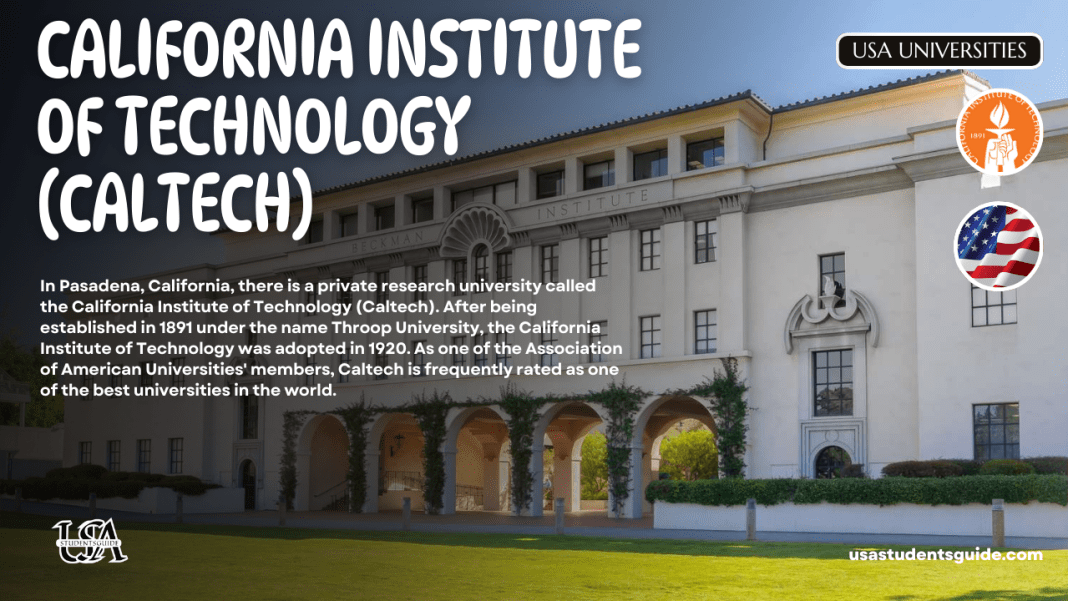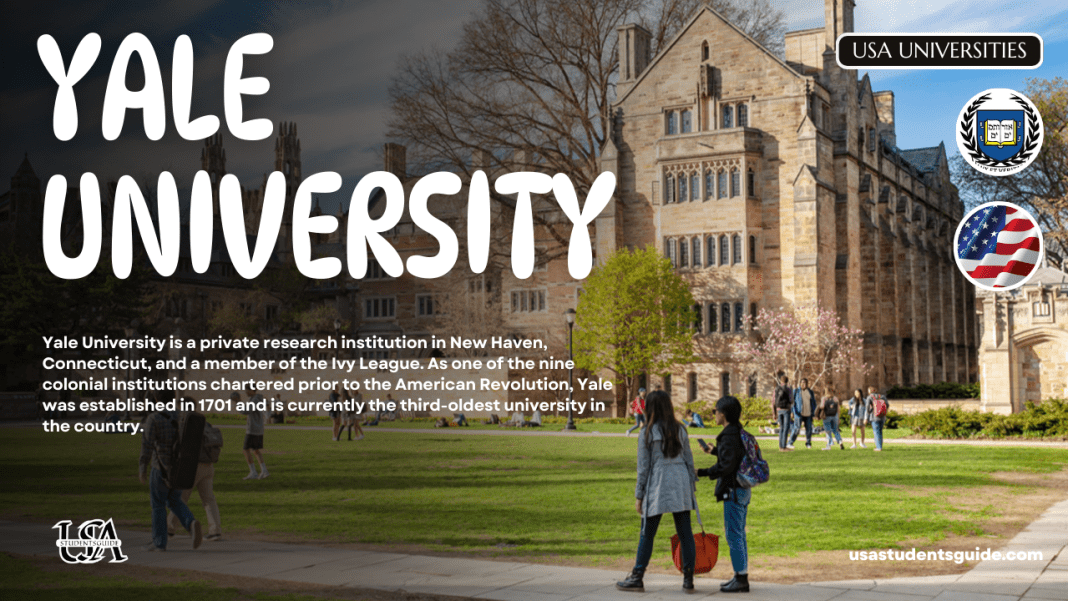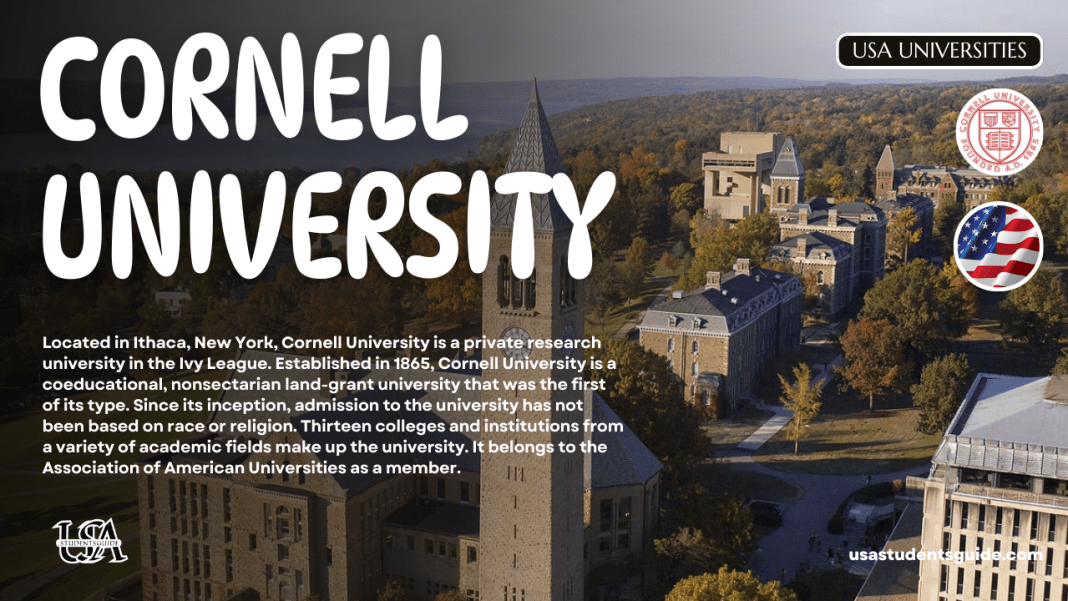Summary
- Founded: 1891
- Location: Pasadena, California, USA
- Type: Private research university
- Motto: “The truth shall make you free”
- Endowment: Approximately $3.6 billion (as of 2023)
- Campus Size: 124 acres
- Academic Structure: Six academic divisions:
- Physics, Mathematics, and Astronomy
- Chemistry and Chemical Engineering
- Biology and Biological Engineering
- Engineering and Applied Science
- Geological and Planetary Sciences
- Social Sciences
- Popular Programs: Physics, Astronomy, Chemistry, Biology, Engineering
History and Background
Caltech was founded in 1891 as a preparatory school, originally named Throop University, by local businessman and politician Throop, who aimed to create a progressive educational institution. In 1910, it transitioned to a scientific research university and adopted its current name, the California Institute of Technology.
Caltech quickly gained a reputation for its strong emphasis on science and engineering, shaped by influential figures such as physicist Robert A. Millikan, who served as its president and was awarded the Nobel Prize in Physics in 1923. Over the decades, Caltech has become a leading institution for scientific research and technological innovation, particularly in fields such as astronomy, physics, and engineering.
Location and Campus
Caltech is located in Pasadena, California, a city known for its beautiful architecture, cultural institutions, and proximity to the Los Angeles metropolitan area. The campus itself spans 124 acres and features a distinctive mix of modern and historic buildings, characterized by a blend of architectural styles.
Notable campus landmarks include:
- The Beckman Institute, a hub for interdisciplinary research
- Pasadena’s iconic Caltech Observatory, which is part of the university’s extensive astronomical research program
- The Caltech Hall, showcasing the university’s history and achievements
The campus fosters an environment conducive to collaboration, with numerous laboratories, libraries, and common areas designed for student engagement and research.
Academic Excellence
Caltech is renowned for its rigorous academic programs and is consistently ranked among the top science and engineering universities globally. The university comprises six academic divisions focusing on scientific and technological disciplines.
Caltech’s commitment to research is evident in its faculty, which includes numerous Nobel laureates, MacArthur fellows, and National Medal of Science winners. The university has a strong emphasis on undergraduate education, encouraging students to engage in research from their first year.
Key academic offerings include:
- Bachelor of Science degrees in various fields, with an emphasis on small class sizes and individualized attention.
- A robust graduate program, particularly in engineering and applied sciences, fostering a culture of innovation and discovery.
Caltech’s research output is substantial, with an annual research budget exceeding $350 million, focusing on interdisciplinary projects that address global challenges.
Student Life and Diversity
Caltech maintains a relatively small student body of approximately 1,000 undergraduates and 1,300 graduate students, fostering a close-knit community. The university promotes diversity and inclusion, with students hailing from more than 40 countries.
Student life at Caltech is vibrant and engaging, with over 100 student organizations ranging from academic clubs to cultural societies. Key aspects of student life include:
- House System: Students are assigned to one of the six residential houses, which provide a community setting and organize social and academic activities.
- Traditions: Unique Caltech traditions, such as “Ditch Day,” where seniors plan elaborate pranks, help to foster camaraderie and school spirit.
Despite its rigorous academic atmosphere, students find time for recreational activities, including sports, arts, and cultural events.
Admissions and Scholarships
Caltech’s admissions process is highly competitive, with an acceptance rate of around 3.9% for the class of 2027. The admissions committee seeks students with exceptional academic performance, strong recommendations, and a demonstrated passion for science and technology.
Application requirements include:
- High school transcripts showcasing advanced coursework, particularly in math and science.
- Standardized test scores (SAT/ACT), though the university has adopted a test-optional policy in recent admissions cycles.
- Letters of recommendation from teachers familiar with the applicant’s academic abilities.
- Personal essays that reflect the applicant’s interests and aspirations.
Caltech is committed to providing financial aid to ensure that all admitted students can attend. The university employs a need-blind admissions policy for U.S. students and meets 100% of demonstrated financial need. Key financial aid options include:
- Need-based scholarships: Designed to assist families with varying financial backgrounds.
- Caltech Scholarships: Available for both undergraduate and graduate students, based on financial need.
Caltech’s Contribution to Research and Innovation
Caltech plays a pivotal role in advancing research and innovation across multiple scientific domains. The university is home to several renowned research centres and institutes, including:
- The Jet Propulsion Laboratory (JPL): Managed by Caltech, JPL is a leading center for robotic exploration of the solar system.
- The Caltech Seismological Laboratory: focusses on earthquake research and monitoring in California and beyond.
- The Division of Chemistry and Chemical Engineering: is known for groundbreaking research in energy and materials science.
Caltech’s research initiatives are often interdisciplinary, encouraging collaboration between departments to address pressing global issues such as climate change, energy sustainability, and public health.
Notable Alumni
Caltech’s alumni network includes some of the most influential figures in science, technology, and politics. Notable alumni include:
- Frank Oppenheimer: Physicist and founder of the Exploratorium in San Francisco.
- Shirley Ann Jackson: theoretical physicist and first African-American woman to earn a Ph.D. from MIT, former chair of the U.S. Nuclear Regulatory Commission.
- Gordon Moore: co-founder of Intel and author of Moore’s Law.
- Katherine Johnson: a mathematician whose calculations were critical to the success of NASA’s early space missions.
These individuals have made significant contributions to their fields, reflecting Caltech’s commitment to fostering innovation and leadership.
Global Impact and Rankings
Caltech consistently ranks among the top universities worldwide, particularly in STEM fields. According to the 2024 QS World University Rankings, Caltech is ranked 4th globally, while U.S. News & World Report places it 6th among national universities.
The university’s global impact is underscored by its collaborations with leading research institutions, government agencies, and private sector partners, addressing complex global challenges and advancing scientific knowledge.
How to Apply as an International Student
International students interested in applying to Caltech should follow similar steps to domestic students, with additional considerations:
- English Proficiency: Non-native English speakers must submit TOEFL or IELTS scores.
- Academic Records: Transcripts should be translated into English if not already in that language.
- Financial Documentation: Required to demonstrate the ability to cover tuition and living expenses.
Key application steps include:
- Completing the Common Application or Coalition Application.
- Submitting standardised test scores (optional).
- Providing letters of recommendation and high school transcripts.
- Writing compelling personal essays that reflect the applicant’s academic interests and aspirations.
Why Caltech?
Caltech is recognised for its unparalleled commitment to scientific inquiry, innovation, and leadership. The university’s small size allows for personalised education, fostering close relationships between students and faculty.
With its rigorous academic programmes, cutting-edge research opportunities, and strong entrepreneurial spirit, Caltech prepares students to tackle some of the world’s most pressing challenges. The emphasis on interdisciplinary collaboration, along with its strategic location in Southern California, positions Caltech as a prime institution for aspiring scientists and engineers.
The California Institute of Technology stands as a beacon of academic excellence and innovation in the world of science and engineering. Its dedication to research, combined with a strong sense of community and collaboration, makes it an ideal environment for students who aspire to push the boundaries of knowledge and make a significant impact on the global stage.
With a legacy of outstanding contributions to science and technology, Caltech continues to attract the brightest minds from around the world, shaping the future of research and innovation.



